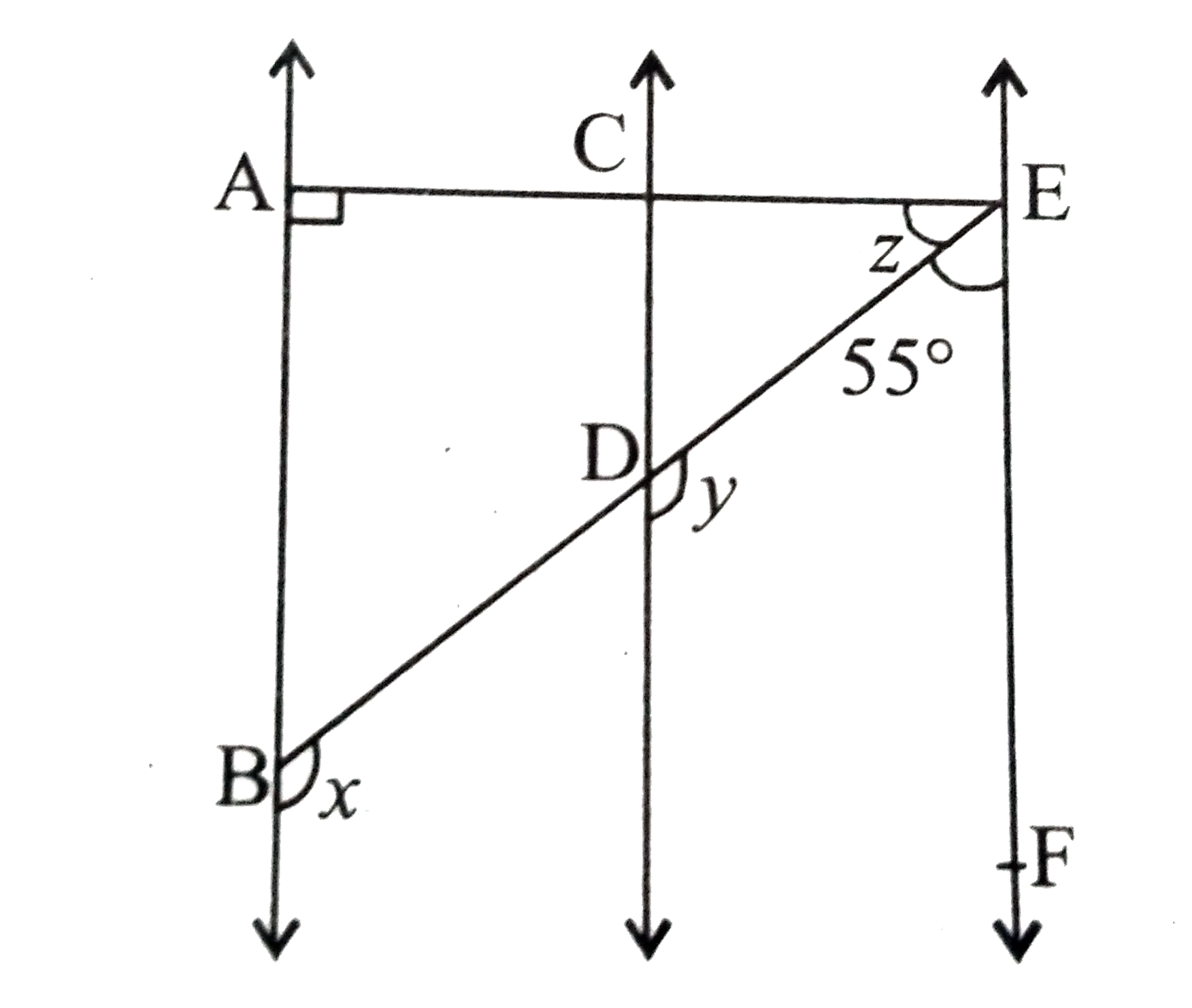नीचे के चित्र में AB∣∣CDऔर CD∣∣EF है । साथ हीEA⊥AB है । यदि ∠BEF=55∘ है तो x,y और z के मान ज्ञात कीजिए।

y+55∘=180∘ [चूंकि CD∣∣EF तथा ये तिर्यक रेखा ED के एक ही ओर के अंतः कोण है]
∴y=180∘−55∘=125∘
पुनः x=y [संगत कोण अभिगृहीत से क्योंकि AB∣∣CD]
∴x=125∘
अब चूंकिAB∣∣CD और CD∣∣EF है इसलिए AB∣∣EF
∴∠EAB∠FEA=180∘ [तिर्यक रेखा EA के एक ही ओर के अंतः कोणों का योग]
∴90∘+z+55∘=180∘
अतः z=35∘
Topper's Solved these Questions
- रेखाएं और कोणBOOK - KC SINHACHAPTER - रेखाएं और कोणEXERCISE - अति लघु उत्तरीय प्रश्न ( रिक्त स्थानों को भरें ताकि दिया गया कथन सत्य हो।)
5 Videos
- रेखाएं और कोणBOOK - KC SINHACHAPTER - रेखाएं और कोणEXERCISE - अति लघु उत्तरीय प्रश्न (निम्नलिखित कथनों में कौन सत्य है तथा कौन असत्य है लिखें।)
5 Videos
- यूक्लिड की ज्यामितीय का परिचय BOOK - KC SINHACHAPTER - यूक्लिड की ज्यामितीय का परिचय EXERCISE - वस्तुनिष्ठ प्रश्न
15 Videos
- लम्ब वृतीय बेलन BOOK - KC SINHACHAPTER - लम्ब वृतीय बेलन EXERCISE - वस्तुनिष्ट प्रश्न
10 Videos
Similar Questions
तल में दो भिन्न बिंदुएं एक ................................ रेखा को निर्धारित करते हैं।
View Solutionरैखिक युग्म को बनाने वाले दोनों कोण न्यूनकोण होते हैं।
View Solutionएक बिंदु से होकर कितनी रेखाएँ खींची जा सकती हैं ?
View Solutionएक बेलन के आधार का व्यास 14 सेमी है और उसका वक्रपृष्ठ 1540 सेमी 2 है तो उसकी ऊंचाई है
View SolutionIn the given figure (not to scale), O is the centre of the circle. A,B,C and D are concyclic and AB=CD . If /_MON =120^(@) , then find /_ OPN .
View SolutionDetermine the point of symmetry of a regular hexagon.
View SolutionDtermine the images of the following figure about the given line :
View SolutionIn the figure above (not to scale), ¯¯¯¯¯¯AB⊥¯¯¯¯¯¯CDandAD is the bisector of ∠BAE.AB=3cm and AC=5cm. Find CD.
View SolutionMatch the following Column A to Column B

View SolutionMatch the following Column A to Column B

View SolutionMatch the following Column A to Column B

View SolutionThe inequation represented by the graph given below is :
View SolutionThe inequation that best describes the graph given below is _________
View SolutionThe inequation that best describes the following graph is _________
View SolutionIn the figure (not to scale) AB = AC and BD = CD. Find ∠ADB
ltimg src="https://d10lpgp6xz60nq.cloudfront.net/physics_images/PS_MATH_IX_C15_E05_003_Q01.png" width="80%"gt
View Solution
